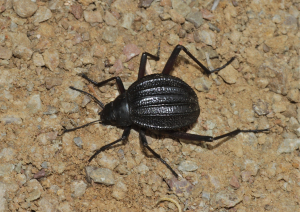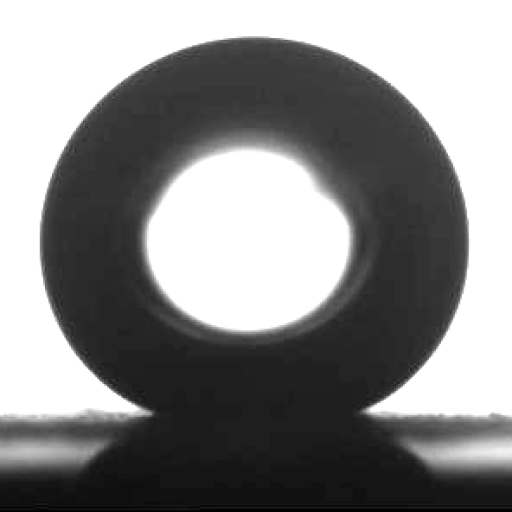Desert Beetle, Stenocara sp

The Namib desert in southern Africa has negligible rainfall but experiences dense early morning fog. Some beetles have adapted to live there by having backs that let them collect drinking water from the fog. The surface of the backs consists of hydrophobic (water-repelling) wax-coated troughs and hydrophilic (water-attracting) non-waxy peaks. When the beetle points its back forwards into the wind, droplets form on the hydrophilic peaks at the top of its fused wings. Eventually, an attached droplet will become sufficiently large that its contact area covers the entire hydrophilic peak. When it gets larger still, the capillary force that attaches the drop to the peak is overcome. The water droplet then detatches and rolls down to the beetle’s mouthparts.
Biomimetic structures have been made consisting of small glass spheres partially embedded into a glass microscope slide coated with warm wax, such that the tops of the glass spheres play the same role as the non-waxy peaks on the beetle’s back and the wax coating plays the part of the hydrophilic areas. When tilted in a fine mist of water, these structures collected water in the same way as the beetle.
Publication
Water capture by a desert beetle A. Parker and C.R. Lawrence, Nature 414 (2001), 33-34
